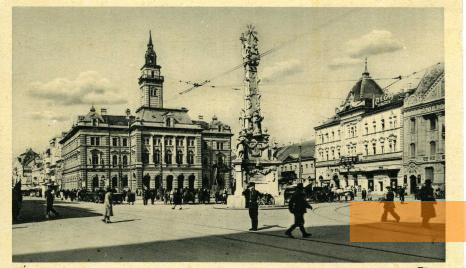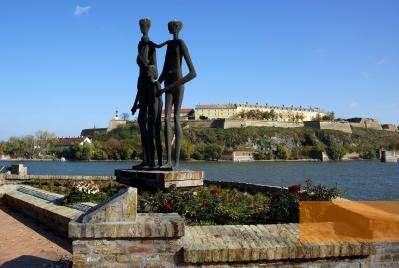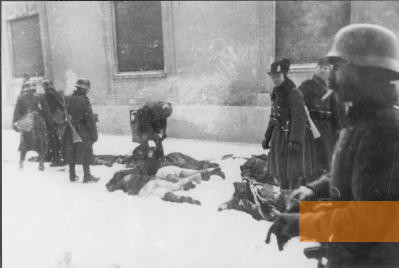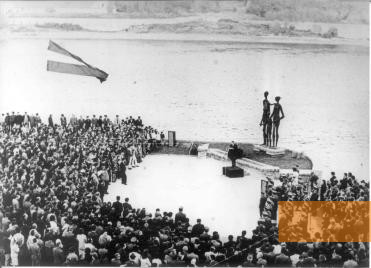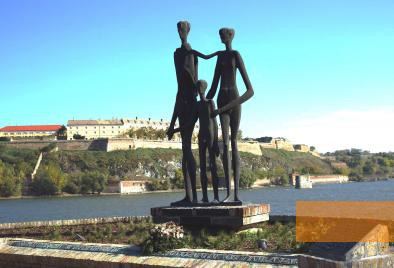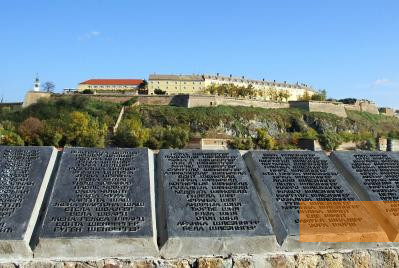Since 1971, a memorial on the banks of the Danube in the Serbian city of Novi Sad (German: Neusatz an der Donau, Hungarian: Újvidék) has commemorated the approximately 800 Jews and 700 Serbs, who were murdered by Hungarian units in January 1942.
Novi Sad is the capital of the autonomous province of Vojvodina, which lies between the river Danube and the river Sava. After the First World War, Hungary had to cede this region to the Kingdom of Serbs, Croats and Slovenes. In 1940, Novi Sad had a population of 68,500, including 4,300 Jews. In April 1941, German, Italian and Hungarian troops invaded Yugoslavia and divided it into occupation zones. Hungary occupied the region of Bačka in the Vojvodina, and annexed the formerly Hungarian territories. Shortly after occupation began, the Hungarian administration began persecuting Jews. In January 1942, commandant general Feketehalmy-Czeydner began ordering retaliation measures following attacks by Serbian partisans in the area of Novi Sad. On January 22, 1942, Hungarian constabulary chased several hundred Jews and Serbs - men, women and children - from their houses to the Danube at a temperature of about -25 degrees Celsius. There, they had to line up in a bathing area on the banks of the Danube. Soldiers and constabulary shot the people one after the other and pushed the bodies into the river. The murders continued until the following day. Similar massacres took place in the entire region.
Hungarian constabulary and soldiers shot at least 879 people, including many Serbs and at least 550 Jews, in January 1942 in the course of the so-called razzia. Other sources cite higher victim numbers, placing the death toll at over 3,200, the majority of the victims being Serbs and about 820 Jews. The exact number of victims has not been determined.
The massacres, which came to be known as »Razzias« (Serbian: Racija), led to a political scandal in Hungary as a result of which the perpetrators were prosecuted already during the war. However, most of them managed to flee and seek refuge in Germany. After the war, general Feketehalmy-Czeydner was extradited from Soviet-occupied Hungary to Yugoslavia and executed there in 1946.
In 1971, a sculpture by Serbian artist Jovan Soldatović from Vojvodina was erected on the bank of the Danube river. The memorial entitled »The Family« (Serbian: Porodica) commemorates the men, women and children who were murdered in January 1942. Later, information boards in various languages and memorial plaques bearing the names of victims were added.
In 1971, a sculpture by Serbian artist Jovan Soldatović from Vojvodina was erected on the bank of the Danube river. The memorial entitled »The Family« (Serbian: Porodica) commemorates the men, women and children who were murdered in January 1942. Later, information boards in various languages and memorial plaques bearing the names of victims were added.
- Name
- Spomenik žrtvama racije u Novom Sadu
- Address
-
Kej žrtava racije
Novi Sad - Open
- The memorial is accessible at all times.


